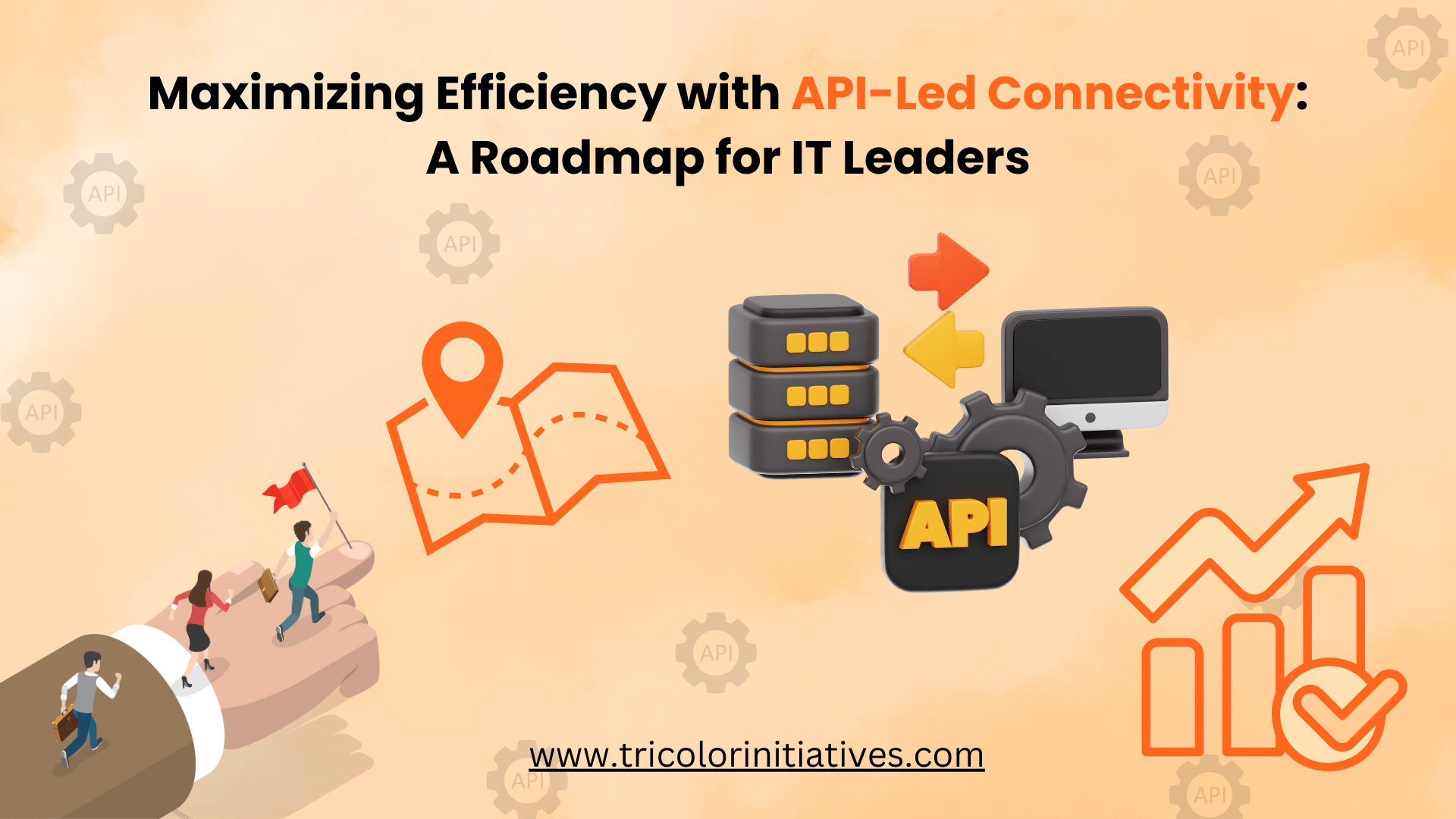IT leaders face enormous pressure to deliver scalable and agile solutions while preserving operational efficiency as the digital landscape changes. Since traditional integration methods often fall short of meeting these demands and lead to bottlenecks, increased costs, and delayed time-to-market, businesses have adopted API led connectivity. It helps companies to innovate more quickly and effectively by separating systems and facilitating smooth communication between devices, data sources, and applications. A study by MuleSoft reveals that organizations that have adopted Mulesoft’s API led connectivity see a 64% faster time-to-market for new products and services and a 40% reduction in operational costs and lower maintenance. This enables organizations to be more innovative, agile, and cost-efficient in positioning them for long-term success in a rapidly evolving business landscape.
What is API Led Connectivity?
API led connectivity is an advanced integration process that prioritizes reusable and purpose-built APIs. Unlike traditional point-to-point integrations, the strategy used in API led connectivity MuleSoft allows IT teams to develop scalable, modular, and secure digital ecosystems that align with business objectives. By severing the connection between systems and services, organizations may use data as a strategic asset and quickly adjust to shifting market conditions.
Understanding the API Led Connectivity Architecture
Developing an organized API Led integration strategy that optimizes reusability, scalability, and flexibility is the goal of API led connectivity, which goes beyond simply linking disparate systems. The architecture is differentiated into three layers, including:
- System APIs: By establishing connections with the main systems of record (such as ERP, CRM, and legacy databases), these APIs expose data without altering the underlying systems. They enable more extensive internal use of critical data, making them the cornerstone of the API-led strategy.
- Process APIs: These APIs, located above System APIs, manage the logic required for data processing and manipulation as well as the coordination of data from multiple systems. These APIs are essential for developing business processes that are consistent and reusable between various departments.
- Experience APIs: The final layer is all about giving users access to data via online portals, mobile apps, and Internet of Things devices, among other channels. Experience APIs are tailored to individual user requirements, ensuring the right data is delivered in the right format.
This layered approach allows organizations to build a scalable and agile API Led integration ecosystem. Decoupling the integration layers reduces the chances of disruption and makes it easier to adapt to evolving business requirements by allowing one to be changed without affecting the others.
The Business Impact: Efficiency Gains from Mulesoft’s API-Led Connectivity
Efficiency is the cornerstone of any successful IT strategy. API-led connectivity MuleSoft directly contributes to improved efficiency by:
- Reducing Integration Complexity: With increasing connections, traditional point-to-point integrations can easily become challenging to manage. However, it makes establishing scalable and easily manageable reusable APIs easier.
- Enhancing Agility: API led connectivity’s modular nature facilitates organizations in quickly developing and deploying new services. According to a report, organizations that adopt API-led strategies are 33% more agile in responding to market changes than their peers.
- Enabling Real-Time Data Access: APIs enable real-time data access, faster decision-making, and more responsive operations. Real-time data, for instance, can result in 20% lower inventory costs and 35% shorter lead times in supply chain management.
- Cutting Costs: Organizations can drastically cut development costs by repurposing pre-existing APIs for a variety of projects. A Forrester study found that companies with mature API management practices saw a 30% reduction in integration costs.
Exploring the Real-World Applications of API-Led Connectivity
Accelerating Digital Transformation in Financial Services
One of the leading financial institutions encountered challenges in modernizing its core banking systems while maintaining compliance with stringent regulatory requirements. The bank created System APIs to expose data from legacy systems, like account management and transaction processing, by implementing API led connectivity. Subsequently, new digital services like real-time fraud detection and mobile banking were developed using process APIs.
The Outcome – The API-led approach allowed the bank to launch new services 40% faster than with traditional methods, resulting in a 25% increase in customer satisfaction and a 15% reduction in operational costs.
Streamlining Manufacturing Operations
A global manufacturing company was struggling with inefficiencies in its supply chain due to fragmented systems and data silos. The company implemented API led connectivity MuleSoft to integrate its ERP, MES (Manufacturing Execution System), and IoT platforms. System APIs connected these core systems, while Process APIs orchestrated data across the supply chain, enabling real-time monitoring and predictive maintenance.
The Outcome – This approach led to a 30% reduction in downtime and a 20% improvement in production efficiency. The company also reported a 15% decrease in overall operational costs.
Enhancing Customer Experience in Retail
A major retail chain needed to improve its omnichannel customer experience by integrating its online and offline systems. By leveraging Mulesoft’s API led connectivity, the retailer created Experience APIs to unify customer data across e-commerce platforms, in-store systems, and mobile apps. These APIs enabled personalized marketing, real-time inventory checks, and seamless return processing.
The Outcome – The retailer saw a 50% increase in online sales, a 35% improvement in customer retention, and a 20% reduction in return processing times.
Customer Success Story: Revolutionizing a Consumer Goods Giant with API-Led Connectivity
The Challenge
One of the leading consumer goods companies struggled with fragmented systems, slow response times, and a lack of personalized customer experiences, threatening its competitive edge in the market. Their disconnected infrastructure led to inefficiencies, while outdated processes hindered responsiveness and customer satisfaction.
The Solution
Tricolor Initiatives implemented MuleSoft’s API led connectivity to integrate the company’s ERP, CRM, and supply chain systems. By creating system APIs, TCI enabled seamless data flow and real-time responsiveness. Process APIs automate workflows, allowing the company to deliver personalized shopping experiences at scale.
The Outcome
- 40% reduction in operational bottlenecks improved speed to market.
- 35% increase in customer satisfaction due to real-time responsiveness.
- 25% boost in average order value from personalized experiences.
- 30% market share growth driven by scalability.
- 20% reduction in IT costs enabled further innovation.
This transformation showcases how API led connectivity, executed by TCI, turned a traditional business into a digital leader, setting new standards in customer experience and operational efficiency.
Strategic Recommendations: Building Your API Led Connectivity Roadmap
To fully leverage the benefits of API led connectivity, IT leaders should consider the following strategic recommendations:
- Invest in API management since it’s imperative for ensuring the security, scalability, and performance of your APIs. Invest in technologies that facilitate quick API deployment, enforce security guidelines, and offer insight into API usage.
- Foster a Culture of Reusability by encouraging teams to build APIs with reusability in mind. This will not only help reduce development time but will also ensure consistency across different projects and departments.
- Adopt a Layered Approach by structuring your MuleSoft API Led Connectivity Architecture with System, Process, and Experience APIs to maximize flexibility and scalability. As a result, you will be able to adjust to shifting business requirements without having to interfere with current operations.
- Prioritize security and compliance since APIs are the backbone of your digital ecosystem. To safeguard confidential data and adhere to industry rules, put strong authentication, encryption, and monitoring systems in place.
- Measure and optimize the performance of your APIs and make data-driven decisions. Use metrics, such as API response times, error rates, and usage patterns, to identify areas for improvement.
The Future of Efficiency is API-Led
It represents a paradigm shift in how businesses approach digital transformation and integration, not just a catchphrase. To remain competitive in the fast-paced digital world of today, IT leaders must be able to create an ecosystem of API Led integration that is adaptable, scalable, and effective. Organizations can achieve unprecedented levels of efficiency and propel digital transformation initiatives by implementing a layered MuleSoft API Led Connectivity Architecture, prioritizing security, investing in API management, and continuously optimizing, as outlined in this blog. In case, you have been on the lookout for a reliable partner who can help you overcome ongoing challenges, the future of efficiency is here—Mulesoft’s API Led connectivity.


